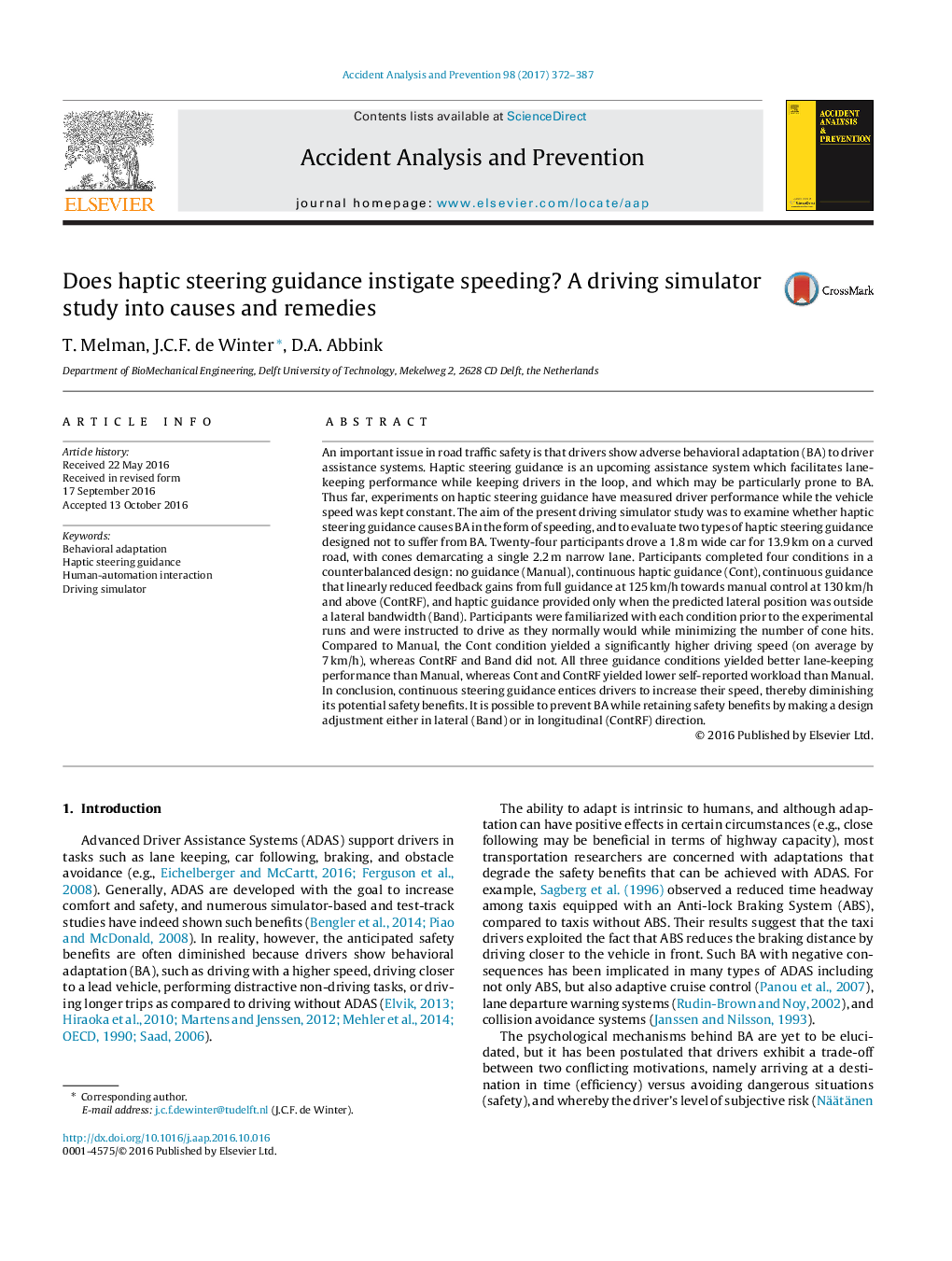| Article ID | Journal | Published Year | Pages | File Type |
|---|---|---|---|---|
| 4978851 | Accident Analysis & Prevention | 2017 | 16 Pages |
â¢We evaluated whether haptic steering guidance causes behavioral adaptation (BA).â¢Adverse speed adaptations were found when driving with haptic steering guidance.â¢Two variants of haptic steering guidance were proposed that were expected to not suffer from BA.â¢Both systems successfully prevented speeding while retaining safety benefits.â¢Results suggest that more effective ADAS can be designed if BA is accounted for.
An important issue in road traffic safety is that drivers show adverse behavioral adaptation (BA) to driver assistance systems. Haptic steering guidance is an upcoming assistance system which facilitates lane-keeping performance while keeping drivers in the loop, and which may be particularly prone to BA. Thus far, experiments on haptic steering guidance have measured driver performance while the vehicle speed was kept constant. The aim of the present driving simulator study was to examine whether haptic steering guidance causes BA in the form of speeding, and to evaluate two types of haptic steering guidance designed not to suffer from BA. Twenty-four participants drove a 1.8Â m wide car for 13.9Â km on a curved road, with cones demarcating a single 2.2Â m narrow lane. Participants completed four conditions in a counterbalanced design: no guidance (Manual), continuous haptic guidance (Cont), continuous guidance that linearly reduced feedback gains from full guidance at 125Â km/h towards manual control at 130Â km/h and above (ContRF), and haptic guidance provided only when the predicted lateral position was outside a lateral bandwidth (Band). Participants were familiarized with each condition prior to the experimental runs and were instructed to drive as they normally would while minimizing the number of cone hits. Compared to Manual, the Cont condition yielded a significantly higher driving speed (on average by 7Â km/h), whereas ContRF and Band did not. All three guidance conditions yielded better lane-keeping performance than Manual, whereas Cont and ContRF yielded lower self-reported workload than Manual. In conclusion, continuous steering guidance entices drivers to increase their speed, thereby diminishing its potential safety benefits. It is possible to prevent BA while retaining safety benefits by making a design adjustment either in lateral (Band) or in longitudinal (ContRF) direction.
